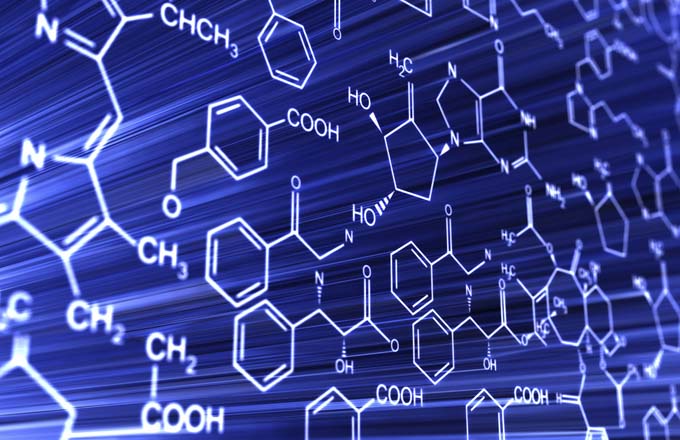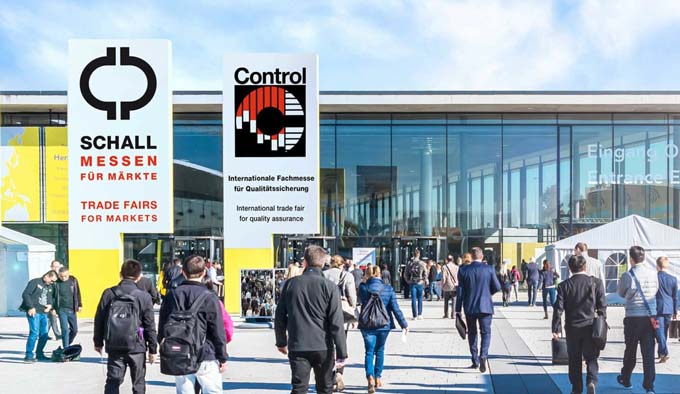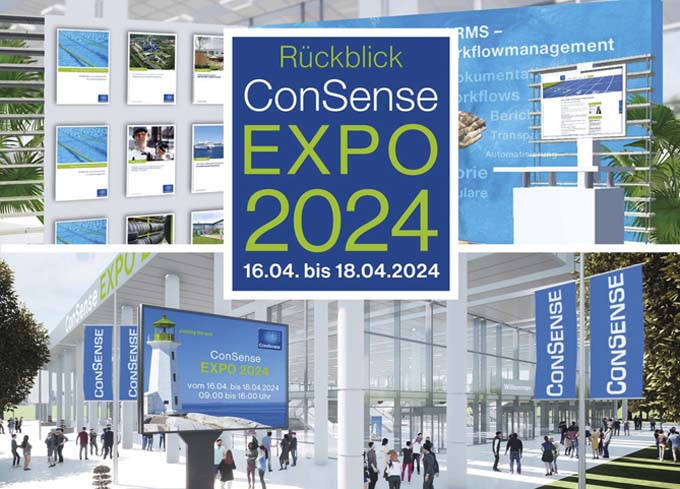100 years of SNV and a look into the future
The 100th anniversary of the SNV revived a whole ten decades of standardization work and development. Over the past 100 years, the SNV has made valuable and sustainable contributions, enabling cooperation between companies and countries to be constantly optimised.
Much has changed in 100 years, but SNV has remained almost the same. Just as in the past, it is highly committed to topics that are relevant to the future. SNV's programme managers ensure that topics such as food authenticity, blockchain, energy, the circular economy and additive manufacturing are aligned with the needs of the economy and society.
Programme managers take a look into the future
The task of the SNV "Programme Managers" is to identify future trends and coordinate standardisation projects from the outset. They organise kick-off meetings, acquire experts, explain the standardisation process to interested parties and support the project work of the committee, which consists of around 10 to 50 experts depending on the topic and usually meets once a year. They are responsible for stakeholder management and network relevant experts. The aim of the Programme Managers is to overcome the silo mentality and bring the various stakeholders to the same table.
What future topics are the "Programme Managers" working on? Four Programme Managers and their supervisor talk about some of the issues they are working on and take a look into the future:
Lea Leibundgut, Programme Manager Food

You are responsible for the topic of food authenticity. How long have you been working on standards in this area?
Lea Leibundgut: ISO has a technical committee that has been dealing with food since 1947. The committee and its subgroups have already published 858 standards. Since 2016, international experts within the European standards organization CEN have been working on the topic of food authenticity.
In this subject area, work is being done not on a single standard, but on a whole series of standards: Each food product differs from the others in its composition. In the case of food counterfeits, one sometimes does not even know exactly what one is looking for, unlike in the case of pesticide residues or other contaminants such as metals.
What is the goal of your work?
The aim of the Food Authenticity topic area is to develop standards on methods for proving the authenticity of food. These standards should create clarity and transparency about how proof of authenticity can be guaranteed. In this way, local producers can be sure that their raw materials and semi-finished products are not counterfeits, and consumers can also be sure that their extra virgin olive oil, for example, does not contain oil from hot pressing.
Why is your topic relevant to the future?
In the western world, nutrition is not just about satisfying hunger. Nutrition means enjoyment and is a source of identification, such as vegetarian or vegan food. Swiss people are prepared to spend more money on better quality. Moreover, counterfeit food can not only be of inferior quality, but also hazardous to health. With globalisation, more and more raw and semi-finished products are coming from far away, and the buyers do not know the sellers personally. Instead of blind trust, both sides want assurance that they will get what they pay for. Blockchain solutions for the traceability of food are also already being offered.
Where do you see the biggest challenge?
Reliable and meaningful test methods must be found for various foods. In addition, these test methods should be inexpensive to use.
Melanie Hasler, Programme Manager Blockchain

You are responsible for the topic of blockchain. How long have you been working on standards for this?
Melanie Hasler: ISO/TC 307 Blockchain and distributed ledger technologies (DLT) was established in 2016. Since then, 43 countries have been actively involved in international standardisation. Switzerland is also one of them. 13 countries are registered as "observers" in the committee. Since its foundation, the Technical Report "Blockchain and Distributed Ledger Technologies - Overview of and Interactions Between Smart Contracts in Blockchain and Distributed Ledger Technology Systems" has been published. Ten other international standardization projects are currently being developed.
Last month, a Technical Committee (TC) on the topic of blockchain/DLT was also founded in Europe. The European committee will focus primarily on the compatibility of the new technology with the requirements of European legislation such as the General Data Protection Regulation (GDPR). The first two working groups within the TC will deal with the challenging topic of blockchain/DLT and GDPR as well as electronic identity (e-ID).
At national level, the DLT-for-Power standardisation project was launched this month. This is being led by the Swiss energy industry together with SNV and will define a "DLT-based Power Management and Accounting System". The standardisation of the DLT-based communication platform is intended to enable compatibility of the various DLT applications among all the players involved. Participation and collaboration is open to all interested parties.
What is the goal of your work?it?
Interoperability between different providers, platforms and applications is very important here. Standardisation in the area of blockchain/DLT helps to ensure that producers, consumers, the economy and society have the certainty that the technology they use or develop also has a future and that it is or will be compatible with other systems.
Why is your topic relevant to the future?
With the digital currency Bitcoin, the blockchain became globally known as an embodiment of the so-called distributed ledger technologies (DLT). Hardly anyone talks about new digital business models without considering DLT and blockchain. In fact, there is great momentum in the development of new decentralized solutions based on DLT.
Where do you see the biggest challenge?
The many experts must be well coordinated and the mandate must be clear. This requires good communication.
Lukas Möhr, Programme Manager Environment

How long have standards on the circular economy been in development?
Lukas Möhr: A new technical committee at ISO is ISO/TC 323 Circular economy. It was only founded in 2018 and has therefore not yet published a finished standard. At the moment, the committee is doing the preliminary work at the international level in order to be able to start drafting a standard in the near future. Experts from 58 different countries are involved.
What is the goal of your work?
In the field of the circular economy, standardisation can provide an impetus to unify the various efforts. Several stakeholders start with calls or already with concrete measures against the linear economy, which increases the waste of resources. However, if these are aimed in different directions, the effect will fizzle out. Standardisation helps to ensure that everyone is pulling in the same direction.
Why is your topic relevant to the future?
Climate change is not only a concern for the population in Switzerland, but also for people in practically every other country in the world. Experts are looking for various approaches to reducing the impact of different living situations on the environment. One approach under discussion is the circular economy. This involves trying to recycle a product after use, either completely or at least partially, so that it can be used again or as a new raw material. The focus here is on slowing down and closing the material and energy cycles. An example of this is the durable construction, reuse or recycling of a product.
Where do you see the biggest challenge?
The topic of the environment and the circular economy in particular is on everyone's lips at the moment. It is therefore important that it is treated seriously and not overly strained. It should not be pushed too hard from the outset, so that after a while the motivation wanes and the proposed solutions peter out. It should also be noted that the requirements can be introduced gradually. An increase that is too fast will not achieve the goal. Nevertheless, it is important not to dawdle.
Barbara Guder, Programme Manager Energy

Since when have standards been worked on in the field of energy and gas supply?
Barbara Guder: I oversee standards projects in the energy and gas supply sector as well as in the service station network. In these established sectors, international standards have been developed and applied for decades. The subject of energy is very diverse, and the standards are therefore developed in various standards committees, usually separately for each energy source. For example, there is the international ISO/TC 28 Petroleum and related products and fuels and ISO/TC 193 Natural gas. There is even a separate International Electrotechnical Commission (IEC) for the field of electrical energy.
At the moment, the entire energy industry is in a state of upheaval. In order to achieve the climate targets, today's energy system must be transformed, away from fossil energies and towards renewable energies. This technological transformation can only be implemented with the help of standards.
What is the goal of your work?
The decarbonisation of the energy system and the integration of volatile renewable energies represent a major challenge. In contrast to today's centralised system, the energy system of the future will be a decentralised, flexible and intelligent system. The traditional boundaries between the electricity, gas and heat sectors will be increasingly erased. For such an intelligent energy network to function smoothly, the diverse components and interfaces must be well coordinated. Experts around the world are developing standards for new power-to-X technologies, smart meters and sensors, and novel storage technologies. But the quality requirements for renewable energy sources such as biogas, biofuel oil and hydrogen are also being defined in standards.
Why is your topic relevant to the future?
Climate change is a global challenge, and people around the world are developing programs and catalogs of measures to prevent further global warming and reduce CO2 emissions. Since the building sector and mobility are major contributors to CO2 emissions, people are trying to apply the lever here and break new ground. The energy system of the future must be thought "further" than before, and it will be much more networked.
Electricity, gas and heat grids are moving closer together, and buildings and cars are becoming part of the future energy system. Buildings produce electricity with solar panels, and cars serve as energy storage or consume renewable hydrogen in a fuel cell drive.
Where do you see the biggest challenge?
Just as technologies are moving ever closer together and interdisciplinary approaches to solutions are in demand, organizations and companies must also transform themselves, form networks and enter into cooperative ventures. Away from pigeonhole thinking (silo) and towards interdisciplinary teams. This represents a major challenge for the energy industry, which tends to have a conservative structure and has hitherto operated in a strongly segregated manner according to energy sources. The markets are also regulated differently, such as the electricity and gas markets.
Here, the legislator is called upon to enact new market-oriented regulations. Another challenge is that Switzerland is embedded in a European energy market (an energy network) and cannot establish isolated solutions. When it comes to the integration of renewable gases such as biogas and hydrogen into the energy grid, the national standards committee INB NK 162 "Gas" is of great importance. There are currently 20 experts on the standards committee, mainly from the trade associations. We would like to see even more representatives from industry and research.
Unfortunately, Switzerland is currently only a passive observer country in international hydrogen standardisation. The aim for 2020 is for Switzerland to take a more active role in standardisation here and to contribute its know-how to international standardisation.
Marcel Knecht, Head of Standardisation and International Relations, Programme Manager SWISSMEM Topics

How long have you been working on standards for additive manufacturing?
Marcel Knecht: ISO/TC 261 Additive manufacturing was founded in 2011. Since then, 25 countries have been actively involved in international standardization. Switzerland is also one of them. 8 countries are each registered as observer countries in the committee. Since its foundation, 13 standards have already been published. 24 further international standardisation projects are currently being developed. The majority of these standardization projects are being developed in cooperation with the US organization ASTM.
At European level, CEN/TC 439 was established in 2015. The European committee is not currently working on its own standards projects, but is contributing its expertise to ISO. At national level, the experts of SWISSMEM/NK 1261 Rapid Prototyping and Rapid Manufacturing also contribute their expertise to the ISO standards committee.
What is the goal of your work?
Additive manufacturing is still a very young technology, which is predicted to have a very bright future. In a first phase, standards on basic requirements and terminology were developed. The new standards projects now focus on technical details such as test methods, post-processing methods or file formats. The primary goal is to improve the interoperability and comparability of products.
Why is your topic relevant to the future?
Additive manufacturing is very relevant for the future. Thanks to this material-applying manufacturing technology, it is possible to produce components with completely new structures and geometries that are not possible with conventional manufacturing processes such as milling, turning, drilling. In this way, the material thicknesses and part geometries can be precisely adapted to the loads and particularly light and resistant components can be produced. In addition, the process is very flexible. Highly technological companies produce parts for prototypes within 24 hours and can thus enormously shorten the development time of new products.
Where do you see the biggest challenge?
Since a large number of start-up companies are active in the field of additive manufacturing, it is very time-consuming to explain the benefits of their commitment to standardization. In many cases, it fails due to the limited human resources of these young companies. Nevertheless, it is crucial, especially for start-ups, to keep an eye on standards projects.
Your participation is needed!
Would you like to participate in the international development of standards? By participating in a national standards committee, you can bring your products and services to market faster thanks to an information advantage over competitors. As a committee member, you can meet other national industry experts and discuss new draft standards with them. You also have the opportunity to establish international contacts.
Learn more under https://www.snv.ch/de/mitglieder/vorteile-der-mitgliedschaft.html!
(Source/ Pictures: SNV)









